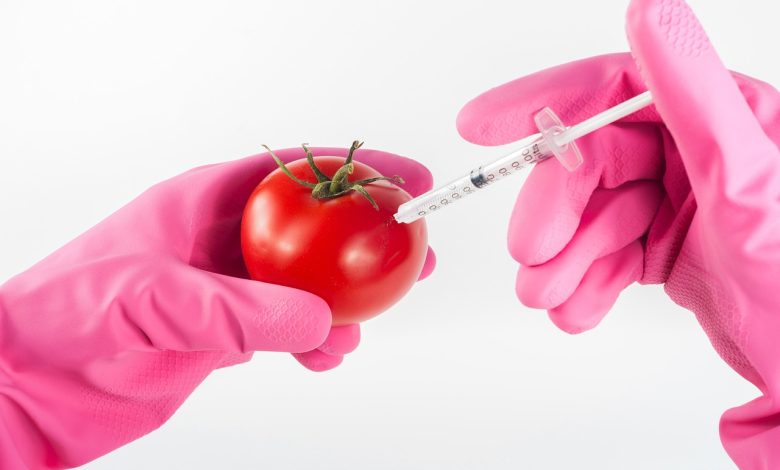The Importance of Colloidal Systems in Food Chemistry

Colloidal systems play an important part in the intriguing field of food chemistry. These systems have an effect on a variety of factors, including stability and texture, as well as sensory characteristics and the transport of nutrients. By gaining an understanding of the significance of colloidal systems in the field of food science, one can help throw light on the complex processes that lead to the production of their favorite foodstuffs. In this piece, we will investigate the significance of colloidal systems in food chemistry, as well as look into the distinguishing characteristics of real solutions, sols, and suspensions. In addition, we will discuss why colloidal systems are so important. In addition, we will talk about the factors that impact gel formation and briefly touch on the idea of iso-electric pH, focusing on the iso-electric points of casein, egg albumin, and gelatin. In addition, we will talk about the elements that influence gel formation.
The Role of Colloidal Systems in the Study of Food Chemistry:
Stability:
Food products benefit from the stability provided by colloidal systems because these systems prevent phase separation and ensure a consistent texture. Certain components of food, such oil and water, would easily be able to separate in the absence of colloidal systems, which would result in an unsightly appearance and an unpleasant texture. Consider how the oil and vinegar in a salad dressing tend to separate from one another. Colloidal systems, such as emulsions, contribute to the maintenance of such mixes’ stability, which in turn helps to ensure that the texture is uniform and pleasurable.
Feel and Texture in the Mouth:
The texture and overall mouthfeel of a wide variety of food products are strongly impacted by the presence of colloidal particles. They have the ability to improve creaminess, thickness, and smoothness, which ultimately results in a more satisfying eating experience. For instance, the velvety and silky consistency of ice cream is largely attributable to the colloidal systems that are used in its production. Because the addition of colloidal stabilizers helps prevent the production of ice crystals, the mouthfeel is silkier and more decadent as a result.
Sense-Related Qualities:
Colloidal systems have an effect on the visual, gustatory, and olfactory properties of foods, including their appearance. The attractive appearance of food products can sometimes be helped along by the inclusion of colloidal particles that are evenly distributed throughout the product. Consider the luxurious, velvety feel of chocolate: the powerful flavor and silky smoothness of chocolate are both due to the colloidal dispersion of cocoa particles in the chocolate. There is a close connection between the presence of colloidal systems and the qualities of taste and texture possessed by food products.
Transport of Nutrients:
Colloidal systems have the ability to encapsulate and safeguard delicate substances, such as vitamins or tastes, while they are being processed or stored. This improves their bioavailability and extends the amount of time they may be stored for. Microencapsulation is a technology that uses colloidal systems to encapsulate and protect nutrients, allowing for the slow release of those nutrients while guaranteeing that they are preserved until they are consumed. This not only improves the nutritional worth of food but also opens up new doors for the development of novel, functional food products.
True solutions, sols, and suspensions each have their own distinct set of defining characteristics.
It is vital to be able to distinguish between real solutions, sols, and suspensions in order to have a complete understanding of colloidal systems. Each possesses unique characteristics and acts in its own unique way.
True Solutions:
At the level of the molecules, real solutions are mixtures that are completely homogenous. When found in real solutions, the solute particles typically have a size that is smaller than one nanometer. They are impossible to separate via filtering because they do not settle over time. The light can pass through true solutions without being scattered in any way. Sugar that has been dissolved in water and saltwater both qualify as examples of real solutions.
Sols are also known as colloidal solutions.
Sols are a type of heterogeneous mixture that consists of particles that are finely dispersed and suspended in a continuous media. Sols can have particle sizes ranging from one to one thousand nanometers in diameter. Sols, in contrast to real solutions, do not experience quick sedimentation, and the particles continue to be disseminated. Sols have a transparent appearance and can sometimes scatter light. While regular filtering cannot separate sol particles, ultrafiltration can. Milk, ink, and paint are some examples of different types of sols.
Suspensions:
Mixtures that are heterogeneous and contain bigger, more visible particles are called suspensions. As time passes, the particles in a suspension settle due to the force of gravity, forming sediment. In general, the particle size of suspensions is greater than 1,000 nanometers. The appearance of suspensions is that of an opaque medium that scatters light. In contrast to sols, the particles that makeup suspensions may be separated using standard filtration techniques. Sand in water and murky water are also examples of suspensions.
The formation of Gel Is Affected By the Following Factors:
The intriguing process of gel formation is affected by a number of different circumstances, including the following:
Temperature:
Depending on the temperature, gels can either continue to persist or disintegrate. When a heated sol is allowed to cool down, certain gels will develop, whereas other gels may dissolve when heated. The gelation process is greatly influenced by temperature, which in turn has an effect on the network’s structure as well as its degree of stability.
Concentration:
There is a considerable correlation between the concentration of the gelling agent or solute and the development of the gel. Greater concentrations have a tendency to encourage gelation by raising the likelihood that molecules will contact one another and cross-link with one another.
pH:
The pH of the system is an extremely important factor in the production of the gel. It has an effect on the charge as well as the interactions of the molecules or colloids that create the gel. The solubility and swelling behavior of the gel network can be influenced by the pH, which can eventually have an effect on the creation of the gel and its properties.
Ionic Consistency :
It’s possible that the ions in the solution will have an effect on how the gel forms. Depending on the context, a higher ionic strength can either stabilize gels or break the networks that hold gels together. Ions are able to have interactions with the charged groups that are present on gel-forming molecules, which can result in a change in the behavior of these molecules as well as their gelation properties.
Time:
Gel formation frequently calls for an adequate amount of time to allow the gelation process to take place. Over the course of time, molecular rearrangements, activities of cross-linking, and processes of hydration take place, ultimately resulting in the construction of a stable gel network.
Additives:
The nature of the gel system determines whether the addition of particular chemicals, such as salts, sugars, or particular proteins, will encourage or hinder the formation of a gel when the gel system is exposed to such substances. These additives have the potential to change the interactions between the molecules that create the gel, as well as the structure and stability of the gel.
Examples of Iso-Electric pH, include:
The pH that a molecule or particle is at when it bears no net electrical charge is referred to as its iso-electric pH or pI. At the pH that is isoelectric, the molecule or particle shows very little solubility or dispersibility, and it has a tendency to either clump together or precipitate.
The following is a list of several generally recognized chemicals along with their corresponding isoelectric points:
Casein has an isoelectric point that is normally in the range of pH 4.6 to pH 4.8. Casein is the primary protein found in milk. Casein molecules will start to clump together at this pH, which will cause coagulation and the creation of cheese.
Egg albumin: The iso-electric point of egg albumin, which may be found in the whites of eggs, is typically in the range of pH 4.9 to 5.2. Egg albumin goes through a process of denaturation and coagulation at this pH, which becomes visible when the eggs are cooked.
Gelatin: The pH range that contains gelatin’s isoelectric point is normally between 4.7 and 5.2. Gelatin is formed from collagen. When the pH reaches this level, the gelatin molecules lose their net charge, which leads to a decrease in solubility and the formation of gel when the mixture is cooled.
Conclusion
Because of the enormous impact they have on stability, texture, sensory qualities, and the delivery of nutrients, colloidal systems are indispensable in the field of food chemistry. By first gaining an understanding of the fundamental distinctions that exist between real solutions, sols, and suspensions, we are able to gain a better appreciation for the different behaviors that colloidal systems exhibit. Gel formation is a fascinating process that plays a role in the production of a wide variety of food products. The formation of gel is influenced by a variety of factors, including temperature, concentration, pH, ionic strength, duration, and additives. In addition, the idea of iso-electric pH assists us in comprehending the behavior of substances such as casein, egg albumin, and gelatin, illuminating their one-of-a-kind features as well as the applications that may be found in the field of food science. By deciphering the riddles of colloidal systems, we can get a more profound understanding of the science that lies behind the delicious food that we eat.





